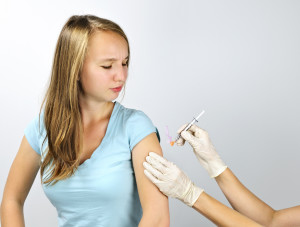 The human papillomavirus (HPV) is a group of more than 150 related viruses newly infecting approximately 14 million people each year. It is estimated that about 79 million Americans are currently infected with HPV. With numbers this staggering, it is important to understand the risks associated with HPV, and how to keep you and your children safe from infection. The HPV vaccine has been proven to protect young people from the virus’ risks and side effects, however as with all preventive treatments, parents should be thoroughly informed about the vaccine and its risks before choosing to vaccinate their children. Read on for everything you need to know about the HPV vaccine.
The human papillomavirus (HPV) is a group of more than 150 related viruses newly infecting approximately 14 million people each year. It is estimated that about 79 million Americans are currently infected with HPV. With numbers this staggering, it is important to understand the risks associated with HPV, and how to keep you and your children safe from infection. The HPV vaccine has been proven to protect young people from the virus’ risks and side effects, however as with all preventive treatments, parents should be thoroughly informed about the vaccine and its risks before choosing to vaccinate their children. Read on for everything you need to know about the HPV vaccine.
Contracting HPV
HPV is transmitted through skin-to-skin sexual contact, making it the most common sexually transmitted infection. In rare cases, pregnant women can pass HPV to their babies during delivery. In these cases, the baby is at risk of developing recurrent respiratory papillomatosis (RRP), a condition where warts grow in the throat.
HPV Symptoms
Many who contract HPV never demonstrate symptoms—making it easier for them to transmit the disease unknowingly. 90 percent of HPV infections go away on their own within two years. Still, those diagnosed with the virus are at risk of developing genital warts, and in the most severe cases, cancer, including cervical, vaginal, vulvar, penile, anal, and throat cancer. The HPV vaccine protects against the development of HPV-related symptoms, as well as cancers.
Who Should Receive the Vaccine
The best time to administer the vaccine, for optimal effectiveness, is around ages 11 and 12 before boys and girls are sexually active. The vaccine also produces a more effective immune response when administered to preteens, making it even more important to vaccinate your children before they become teenagers.
Young adults who did not receive the vaccine before age 12 can still be effectively vaccinated, even if they have already had sex. Young women can be vaccinated up to age 26, and young men can be vaccinated up to age 21. Young men who have sex with other men or who have weakened immune systems, including those who are HIV positive, can be vaccinated up to age 26.
Vaccine Administration
The vaccine is administered in three shots. The second must be given one to two months after the first, and the third must be given six months after the first. Individuals who wait longer than is recommended between shots are still encouraged to finish the series. There is no need to restart the shot series for best results. Research shows that those who receive the entire series are protected for a period of 8-10 years.
Vaccine Effectiveness
Clinical trials have shown that the vaccine provides almost 100 percent protection against precancers and genital warts. In addition, since 2006 when the vaccine became recommended for preteens, researchers have identified a 56 percent decrease in vaccine type HPV infections among young women in the United States, and that overall rates of reported genital wart cases are decreasing as well.
Vaccine Safety
The safety and effectiveness of the HPV vaccine continues to be monitored by the Centers for Disease Control and Prevention (CDC) and the Food and Drug Administration (FDA). To date, no serious health risks have been associated with the vaccine. As with all vaccines, there have been reported side effects. These include pain and redness at the injection site, dizziness, fever, fatigue, muscle or joint pain, and nausea. Some also report brief fainting spells, as may occur after any procedure or vaccination. Severe allergic reactions are rare. Those who are allergic to any of the vaccine components should not receive the vaccine.
For more information on the risks related to HPV, and how vaccination can protect you and your children, speak with your OBGYN today.
More
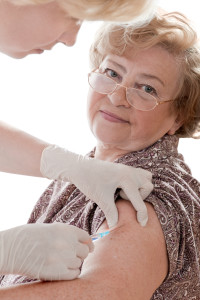 Each year, 5 to 20 percent of Americans contract the flu virus, and 200,000 are hospitalized due to complications. Despite the number of people who fall victim to the flu each season, some Americans still hesitate to receive the vaccine. For many, the hesitation comes from misperceptions regarding vaccination side effects and effectiveness. To ensure you understand the real risks and rewards, learn the facts regarding the flu vaccine and how it can protect you from contracting the illness this flu season.
Each year, 5 to 20 percent of Americans contract the flu virus, and 200,000 are hospitalized due to complications. Despite the number of people who fall victim to the flu each season, some Americans still hesitate to receive the vaccine. For many, the hesitation comes from misperceptions regarding vaccination side effects and effectiveness. To ensure you understand the real risks and rewards, learn the facts regarding the flu vaccine and how it can protect you from contracting the illness this flu season.
Myth: Receiving the flu vaccine can give you the flu.
Perhaps the most common misperception, receiving a flu vaccine has not been proven to cause the flu.
Fact: Side effects may occur after receiving the flu vaccine.
Vaccine side effects may include soreness at the injection site, redness, swelling, low-grade fever, and headache.
Myth: Only adults should receive the flu vaccine.
According to the Centers for Disease Control and Prevention (CDC), everyone six months old and older should receive an annual flu vaccine. Vaccinations are particularly important for those at high risk for serious flu complications, such as the elderly, and those with compromised immune symptoms.
Fact: Some may be susceptible to allergens in the flu vaccine.
Some may experience life-threatening allergies to the flu vaccine or its ingredients, which include eggs, gelatin, and antibiotics. Talk to your doctor if you have any allergies. He or she will be able to tell you if the flu vaccine is right for you.
Myth: There is only one flu vaccine appropriate for all ages.
There are different types of flu vaccinations and strengths. Your doctor will tell you which version of the vaccine is right for you. A high dose flu vaccination is available for those age 65 and older. It is recommended that adults younger than 65 should not get the high-dose flu shot or the flu shot with adjuvant. Those younger than 18 or older than 64 years old should not get the intradermal flu shot.
Fact: The CDC recommends the injectable flu vaccination.
The CDC recommends that during the 2016 to 2017 season, individuals should receive an injectable flu vaccine. The nasal spray flu vaccine is not recommended during 2016 to 2017.
Myth: It’s better to get the flu than the flu vaccine.
The flu virus may cause severe complications and health risks, especially among the elderly, children, and those with certain chronic health conditions such as asthma, diabetes, or heart disease. Getting vaccinated is a safer choice.
Fact: It is best to receive a vaccine every year.
The CDC recommends receiving the flu vaccine annually for those six months old and older. An individual’s immune protection from vaccination declines over time, making annual vaccination the best way to protect against the complications of the flu.
Myth: Getting vaccinated twice offers added protection against the virus.
Studies have not shown any added benefits or effectiveness when adults receive more than once dose of the influenza vaccine. This is also true among those with weakened immune systems, or the elderly.
Receiving an annual flu vaccine has been proven to be the best way to protect yourself against the complications of the flu. Talk to your doctor today about the risks and rewards of receiving the flu vaccine, and make the decision that is right for you.
More
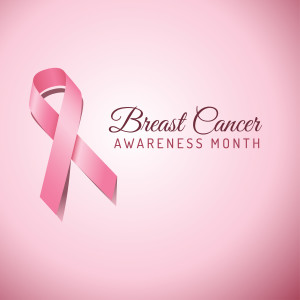 One in eight women will be diagnosed with breast cancer in their lifetime, according to the National Breast Cancer Foundation, Inc. Look around your office, your family gathering, or your next social event and consider the fact that 13 percent of the women in the room will be diagnosed with breast cancer in their lifetime. You may already be able to name family members, friends, and co-workers who have bravely faced a positive diagnosis. The reality that breast cancer has on the women in our lives is staggering.
One in eight women will be diagnosed with breast cancer in their lifetime, according to the National Breast Cancer Foundation, Inc. Look around your office, your family gathering, or your next social event and consider the fact that 13 percent of the women in the room will be diagnosed with breast cancer in their lifetime. You may already be able to name family members, friends, and co-workers who have bravely faced a positive diagnosis. The reality that breast cancer has on the women in our lives is staggering.
In October we honor the victims and survivors of this devastating disease by acknowledging Breast Cancer Awareness Month. However, thirty days every year doesn’t seem like nearly enough time to spend recognizing the impact of breast cancer, especially when you consider that each year over 246,660 women in the United States will be diagnosed with breast cancer, and more than 40,000 will die.
Every month should be breast cancer awareness month. Every month we should honor those we have lost, support those in treatment, and teach the young women in our lives how to lower their risk of being diagnosed in their lifetime. To help you to reduce your own risk of breast cancer, this October, and every month, remember to conduct a breast self-exam. According to breastcancer.org, 20 percent of diagnosed breast cancers are found through a physical exam, rather than by a mammography. To help you to remember to conduct your monthly self-exam, follow these tips:
- Pick a day and stick to it. Choose one day every month for your self-exam and stick to it. Choose a day that’s easy to remember like the first of the month, or a few days after your period ends.
- Buddy-up. Ask a family member or friend to be your self-exam buddy and work to remind one another each month to perform your exams. Holding one another accountable will help ensure you each complete this potentially life-saving task each month.
- Write it on your calendars. All of them. If you’re like most busy multi-tasking women, you have more than one calendar helping you to stay organized. Add your breast self-exam reminder to all of your calendars, including your work calendar, smart-phone calendar, desk agenda, and family planner. When you see reminders in multiple places, a task becomes impossible to ignore.
- There’s an app for that. There are a variety of free Apple® and AndroidTM mobile apps that can help remind you to perform your breast self-exam each month. Pick the app with the features that best meet your needs.
- Sign-up for an email reminder. If you prefer to have your task reminders pop into your inbox, sign-up for a monthly breast self-exam reminder from the Maurer Foundation or cancer.org.
This October, make a promise. Make a promise to yourself and to all the women in your life that you will keep breast cancer awareness and prevention top of mind not just in October when we are surrounded by pink ribbons and advocacy walks, but all year long. With a perpetual focus on the importance of preventing and treating this disease, we face the best odds of reducing our number of annual victims from 40,000 to zero.
More
 When does a few consecutive sleepy days turn into a more general malaise and fatigue that could be indicative of a larger problem? The average adult needs seven and a half to nine hours of sleep per night. Whether you are meeting your nighttime sleep goals or not, if you are consistently experiencing an overwhelming fatigue that is impacting your lifestyle, talk to your doctor. You may be able to improve your snooze with a few lifestyle changes, or you may need to treat an underlying health condition.
When does a few consecutive sleepy days turn into a more general malaise and fatigue that could be indicative of a larger problem? The average adult needs seven and a half to nine hours of sleep per night. Whether you are meeting your nighttime sleep goals or not, if you are consistently experiencing an overwhelming fatigue that is impacting your lifestyle, talk to your doctor. You may be able to improve your snooze with a few lifestyle changes, or you may need to treat an underlying health condition.
What Does Chronic Fatigue Feel Like?
Everyone has experienced sleepiness at some point, but chronic fatigue is a much more overwhelming and debilitating condition. It is a lingering tiredness that is constant and limiting.
What Causes Feelings of Fatigue?
The following factors could be causing your consistent sleepy sensations:
- Not enough hours of sleep per night
- An unhealthy diet
- Regular use of alcohol
- Regular use of recreational drugs
- A rigorous daily exercise routine or a physically demanding job
- Stress
- Obesity
- Insufficient daily physical activity
- Jet lag
- Medications that cause drowsiness, such as antihistamines
- A recent concussion
- Grief
- Medical treatments such as chemotherapy or radiation therapy
If you are experiencing feelings of unrelenting exhaustion, and if you believe it is not related to any of the factors on the list above, talk to your doctor. He or she may test you for one of the following more complex health conditions that has been known to cause fatigue:
- Cancer
- Major depressive disorder
- Diabetes
- Chronic kidney disease
- Sleep apnea
- Chronic obstructive pulmonary disorder (COPD)
- Acute liver failure
- Anemia
- Anxiety
- Chronic infection or inflammation
- Emphysema
- Heart disease
- Hyperthyroidism (an overactive thyroid)
- Hypothyroidism (an underactive thyroid)
- Inflammatory bowel disease (IBD)
- Multiple sclerosis
Chronic Fatigue Syndrome
An additional potential cause of persistent feelings of fatigue is a condition that, according to the Centers for Disease Control and Prevention (CDC), impacts over one million people in the United States. Chronic fatigue syndrome (CFS) is a physical condition marked by overwhelming fatigue and weakness that makes it difficult to perform daily tasks. Those who suffer from CFS often report difficulty getting out of bed, dressing, and eating. No amount of sleep or rest can eliminate the feelings of exhaustion experienced by CFS sufferers.
While the cause of CFS is not known, it is believed that the condition may be caused by a dysfunction of the immune and central nervous syndrome. If CFS is the cause of your fatigue, your doctor will be able to diagnose the condition and prescribe a treatment plan.
More

Most women would say that they were happy to leave their teenage years behind them, especially the friendship dramas, the pre-cell phone lifestyle, the bad hairstyle choices (remember temporary perms?), and especially the teenage acne. Some women, however, don’t get to leave the stress and anxiety of a bad complexion in their high school lockers. Data shows that 35 percent of women in their thirties, 26 percent of women in their forties, and 15 percent of women age 50 and older are still battling the acne breakouts often thought of as only plaguing teens and tweens. If you are among those women living under layers of concealer to hide adult acne, know that there are ways to clear your complexion that don’t involve photo filters.
What Causes Adult Acne?
Hormonal Changes
Think hormones only happen when you’re 16? Think again. Anytime your body increases its production of testosterone, it also increases its production of the oils that clog pores and lead to pimples. According to one study, women over age 33 are more likely to experience premenstrual pimples than younger women. The hormonal changes experienced during menopause can also result in an increase in acne.
Stress
As if it’s not already difficult enough to manage stress in your life, high levels of cortisol that are triggered by periods of stress can trigger acne in return. You know what that means. Stress + acne = Stress = more acne. A frustrating cycle.
A High Sugar Diet
A diet high in sugar can complicate a myriad of health issues, and acne is one of them. A high level of simple carbs and sugars, such as pastas, breads, and sugary desserts, can provoke a breakout in already problematic skin.
Dairy Products
Some studies have also shown a link between adult acne and dairy products. It’s believed that dairy-triggered acne break-outs are caused by the hormones present in some products.
Reduce Sodium Intake
Sodium is another food thought to trigger acne outbreaks. Some doctors believe the iodine frequently found in table salt may exacerbate acne breakouts.
Polycystic Ovarian Syndrome (PCOS)
PCOS is a hormonal disorder that impacts five to 10 percent of women. It causes enlarged ovaries with small cysts on the outer edges. If your adult acne is accompanied by other, more severe side effects of imbalanced hormones, such as excessive hair growth or irregular periods, talk to your OBGYN.
Treating Adult Acne
The best way to treat your adult acne will depend on its underlying cause, however what follows is a list of trusted acne-prevention tips:
- Decrease your overall consumption of refined carbohydrates and sugars. Too much sugar can spike the hormone levels that trigger outbreaks.
- Reduce overall dairy consumption. Some believe that fat free milk in particular, which has more sugar that higher fat versions, may be more likely to trigger an outbreak than other types of dairy products.
- Choose low-sodium food products. Keep your overall sodium consumption below 1,500 mg per day by choosing low-sodium varieties of prepackaged foods.
- Talk to your OBGYN about birth control pills. Depending on your family plan, birth control pills may be an effective way to help normalize the hormonal surges associated with your monthly cycle that can wreak havoc on your oil glands
- Consider blue light therapy. Blue light therapy is a treatment that uses light rays to penetrate follicles and kill acne-causing bacteria. If your acne is severe, your doctor may recommend photodynamic therapy, which adds a topic solution to a traditional blue light therapy treatment.
- Choose tea tree oil over benzoyl peroxide to treat pimples. Benzoyl peroxide can be drying, especially on adult skin. Tea tree oil has natural antiseptic properties to help treat mild to moderate acne outbreaks.
- Manage your stress. Exercise regularly, make sure you’re getting enough sleep each night, and balance your commitments and priorities to make sure you don’t fall victim to the skim complications that stress can cause.
- Choose topical skin care products that include antibacterials and retinoids. Retinoids are particularly important for adult women, since retinoids stimulate collagen production, which helps to fight acne. If OTC products aren’t doing enough to clear your complexion, talk to your dermatologist.
With a healthy diet, a strategy for managing stress, and a commitment to a face cleansing routine, you don’t have to feel like you are back in high school. Instead, you can keep your face pimple-free, smooth, and radiant. Now let’s talk about those high school prom dresses you’ve been thinking you may want to wear again.
More
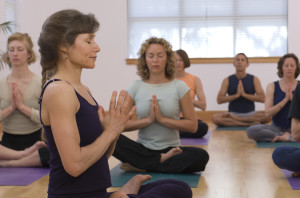 Stress. Just hearing the word can conjure that knot in your stomach, sweaty palmed, anxious feeling. Stress is more than just a mental state. High levels of ongoing stress can cause serious physical effects on your body. For many women, stress symptoms include headaches, fatigue, chest pain, sleeplessness, and stomach aches. While life’s stress triggers are not always in our control, managing stress is in our control. Follow these ten simple steps to reduce stress and stay healthy.
Stress. Just hearing the word can conjure that knot in your stomach, sweaty palmed, anxious feeling. Stress is more than just a mental state. High levels of ongoing stress can cause serious physical effects on your body. For many women, stress symptoms include headaches, fatigue, chest pain, sleeplessness, and stomach aches. While life’s stress triggers are not always in our control, managing stress is in our control. Follow these ten simple steps to reduce stress and stay healthy.
- Focus you breathing. Breathing from your diaphragm helps bring oxygen to your blood, which can instantly produce a calming sensation. To focus your breathing, place your hand on your abdomen and inhale slowly through your nose, making sure that you can see your hand move out as your abdomen expands. Hold your breath for a few seconds, then exhale slowly. Repeat until you feel you have achieved your desired level of calm.
- Exercise regularly. Your body will be better able to physically battle stress when you keep it in fighting shape.
- Eat a healthy diet. The foods you consume can do a lot to mentally and physically prepare you for life’s stressors. A diet high in processed foods, saturated or trans fats, and sugars can amplify your body’s physical reactions to stress. A healthy, balanced diet will help counter the impact of stress by strengthening your immune system and lowering blood pressure.
- Just say no. Avoid smoking, alcohol, and recreational drugs. These chemicals can accentuate stress hormones and further damage your body’s protective immune system.
- Give yourself a mental break. When you begin to feel overwhelmed, and especially if you feel the physical signs of stress coming on, like a racing heart or a headache, physically separate yourself from whatever situation is causing you stress. Take a walk outside, sit quietly for five minutes, or go someplace where you can gather yourself and refocus on what truly matters.
- Seek soothing sounds. Research shows that listening to calming music can reduce feelings of anxiety, lower blood pressure, and slow your heart rate. Tune in to classical music, nature sounds, or whatever your favorite style is that puts you in the mood to smile.
- Get plenty of sleep. When your body and mind are over-tired, it can be more difficult to focus, manage your time effectively, and make good decisions – all stress triggers. Make sure you are getting at least six hours of sleep every night, no matter what is on your “to-do” list.
- Meditate. For many, meditation is an effective technique for calming the mind, lowering the heart rate, and refocusing priorities. Meditation emphasizes the power of positive thinking, which is another important trick for managing high stress levels.
- Build an emotional support system. Whether you just had a bad day, or you are coping with a life event that has raised your stress levels over time, everyone needs someone they can turn to for emotional support. Identify who in your life you can rely on when you need help managing stress. It may be a spouse, sibling, best friend, life coach, or religious leader.
- Laugh. Laughter is an important stress-reducing technique. When you find you need a mental break from stress triggers, turn your attention to something that will make you laugh. Flip on your favorite comedy, scan some funny online videos, or play with your toddler.
No one can fully protect themselves from life’s greatest challenges, but by understanding that you can control how you manage your stress, you can feel confident that you can successfully manage whatever life events come your way.
More
 The Three Biggest Health Factors Women
The Three Biggest Health Factors Women
Should Focus on After Age 50
Fifty is the new forty. Today’s health conscious middle aged women are working to stay healthy as they age gracefully. It’s important to understand that the health goals you set for yourself at age 50 should be different than they were when you were in your forties and thirties. If you are over fifty, the three biggest health factors that you should focus on to help you maintain your overall wellbeing include regulating your blood sugar levels, protecting your bones, and keeping your heart healthy.
Healthy Sugar Levels
Much has been said about the dangers of a high sugar diet. For women over age fifty, keeping sugar levels in check is especially important for maintaining a healthy weight, and a healthy heart. The ability to regulate blood sugar is more difficult over age 50. Strive to keep your blood glucose level in a healthy range by eating high quality foods and staying active. Check the ingredients in the packaged foods you eat and limit products with added sugar and artificial sweeteners. Avoid sugary drinks like soda and sweetened coffee and tea. Replace these empty calorie beverages with water, and add a squeeze of lemon or lime for a natural sweetener instead.
Healthy Bones
During menopause, as estrogen levels dip, a woman’s rate of bone breakdown increases while the rate of new bone formation slows, putting you at risk for osteoporosis. To protect your bones as you age, talk to your doctor about your risks for osteoporosis. He/she will likely recommend regular bone density screenings once you reach age 65, but depending on your health history, your doctor may suggest earlier screenings. To further protect your bone health, make sure your diet includes plenty of calcium. Aim for at least 1,200 milligrams per day from calcium-rich foods like milk, kale, sardines, and yogurt. Your doctor may also recommend a daily supplement to help you reach your calcium intake goals.
Healthy Heart
As women age, and especially after menopause, they lose some of their bodies’ natural defenses against heart disease. Women over age 50 are also at greater risk for developing high cholesterol levels, and type 2 diabetes – two heart health related conditions that can have deadly consequences. To protect your heart long-term, be sure to eat a diet that includes fruits, vegetables, fiber, lean proteins, and healthy fats. The best foods to incorporate into your diet include salmon, walnuts, low-fat milk, oatmeal, and olive oil. In addition to maintaining a healthy diet, it is important to stay active. Just 30 minutes of physical activity a day will help protect your heart as you age.
Remember that staying healthy at any age doesn’t have to be overwhelming. The core of any health routine is to maintain a healthy diet and to stay active. Over age 50, if you work with your doctor to particularly monitor your blood sugar levels, bone density, and heart health, you will be putting yourself in the best position to maintain your overall wellbeing long into the future.
More
 Tips to Not Only Survive, but also Thrive, During the First Few Months After Baby Arrives
Tips to Not Only Survive, but also Thrive, During the First Few Months After Baby Arrives
Giving birth is an extraordinary accomplishment. You may look at celebrities and friends on social media and think that days after welcoming your newborn into the world you should be out and about, sporting a bikini, and feeling energetic. Resist the urge to put too much pressure on yourself to recover quickly. It takes most women nine months to truly feel like they have recovered from their pregnancy. Every woman is different and each birth is unique, however there are some things that you can do to help your body heal effectively post childbirth.
Sleep when your baby sleeps.
Don’t be an overachiever. Your baby’s nap is not the time to do laundry or clean the bathroom. Your body needs rest in order to recover, and with nights interrupted by feedings and changings, you can expect to feel physically exhausted those first few months. Take every opportunity possible to gain extra hours of sleep. As your body recovers and your daily routine normalizes, you won’t require such frequent naps.
Take care down there.
If you tore your perineal area during delivery, or if you had an episiotomy, your body will need some extra time to heal and recover. Your OBGYN may recommend sitting in a few inches of water a few times a day to help keep the area clean. If you experience swelling, use ice packs to help soothe the area.
Get out of the house.
It may be tempting to stay in your pajamas and rest at home, but after a few days, and with your OBGYN’s clearance, you should start getting out of the house and adding some periods of activity to your day. Start simple by taking a walk around the block. Bring your baby with you in a stroller so that you can both benefit from some fresh air.
Have reasonable expectations about your home.
You may have liked your home organized and cleaned to a certain standard before your baby arrived, but take it easy on yourself after delivery. Do your best to stay organized and keep key areas like your bathroom and food prep area clean, but don’t have unrealistic expectations about laundry, dusting, and yardwork. Seek the help of a friend or family member the first few days if you strongly feel the need to tidy up.
Make meals simple.
Your baby’s frequent meals are going to take up a lot of your attention, especially early on. Make meal time simple for the rest of the family. Work together with your spouse to prepare some simple, freezable meals for the week. Just remember not to compromise on quality. You need to stay healthy, so make sure you are eating high quality simple meals, and remember, no alcohol if you are breastfeeding.
Stay in touch with your OBGYN.
If you have any questions or concerns during your recovery, don’t hesitate to contact your OBGYN. He/she will know best how to help you thrive, and not just survive, your first few months after welcoming your baby into your home.
More
 You have been waiting for nine months to meet your new baby. With each day that passes, your anticipation grows until you are wishing every minute of every day for the time to come. When the moment finally does arrive you’ll know, won’t you? You may be surprised to know that there are several signs and symptoms that you should watch for to determine when you have truly gone into labor. Familiarize yourself with the list of labor signs below so that you will be ready to go for the ultimate go time.
You have been waiting for nine months to meet your new baby. With each day that passes, your anticipation grows until you are wishing every minute of every day for the time to come. When the moment finally does arrive you’ll know, won’t you? You may be surprised to know that there are several signs and symptoms that you should watch for to determine when you have truly gone into labor. Familiarize yourself with the list of labor signs below so that you will be ready to go for the ultimate go time.
Contractions That Occur at Regular Intervals. One of the most accurate ways to tell if you are in labor is to time the sensations you believe to be contractions. In the beginning, the contractions will feel like menstrual cramps. Begin to time the “contractions” from the start of one to the start of the next. If they occur at regular intervals, with about the same amount of time in between, and if they start to appear closer to one another or if the pain increases, you’re likely in labor.
You Lose Your Mucus Plug. The mucus plug prevents bacteria from entering the uterus by blocking the opening to the cervix. Before labor, however, the mucus plug is expelled, ultimately allowing the baby to pass through the cervix during birth.
Bloody Show. When the mucus plug is expelled, you may experience what is known as “bloody show,” which is a mucusy discharge tinged pink or brown by blood. The appearance of the bloody show is a sign that blood vessels in the cervix are rupturing as it begins to dilate.
Your Water Breaks. This is the sign that everyone anticipates as the ultimate signal of labor, but don’t count on it. Breaking water only occurs in less than 15 percent of births. If your water does break, you will experience a trickling or gushing of amniotic fluid. The liquid should be odorless. If you do notice a color, or an odor, call your OBYGN immediately, as it may be a sign that the baby is in distress and has passed meconium, or the earliest infant stool, in the uterus.
Loose Joints. During your pregnancy, your body produces the hormone relaxin, which makes all of your ligaments soften. Before labor, you may feel as if your joints have gone loose. This is your body’s natural way of preparing your pelvis for the birth.
Nesting. Some women experience a biological phenomenon known as nesting in the days and weeks before birth. Nesting during pregnancy is the overwhelming desire to get your home ready for your new baby. When nesting occurs women experience a burst of energy and find themselves motivated to clean, or bake, or in some way prepare the home for their new arrival. Just be careful not to overdo it!
The birth of your baby will be a monumental moment in your lives. Remember to stay calm, and if you have any concerns about the symptoms you are experiencing, contact your OBGYN. Your doctor is prepared to help you bring your newest member of your family into the world as safely as possible.
More
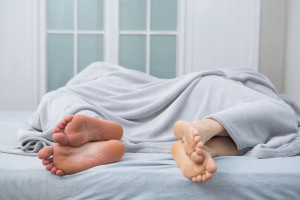 Some days you’re just feeling off. Maybe you feel slightly less motivated, or you just feel down, or disinterested. If you’re having such feelings in the bedroom, and you’re finding that the feelings have lasted for more than a few weeks, you may be in a sex slump. If you are experiencing low sex drive, don’t panic. Such temporary feelings can be caused by a variety of factors and your doctor can help you recover.
Some days you’re just feeling off. Maybe you feel slightly less motivated, or you just feel down, or disinterested. If you’re having such feelings in the bedroom, and you’re finding that the feelings have lasted for more than a few weeks, you may be in a sex slump. If you are experiencing low sex drive, don’t panic. Such temporary feelings can be caused by a variety of factors and your doctor can help you recover.
Sex Drive Factors
As women, our sex drives are complicated. There are several factors that impact our desire for intimacy, including our:
- Overall state of health and wellness
- Emotional well-being
- Past experiences
- Personal beliefs
- Lifestyle choices
- Current relationship state
With so many factors impacting the desire for sex, feelings of low sexual desire can have a variety of causes. Consider the following:
- Illness. Illnesses such as arthritis, cancer, diabetes, high blood pressure, coronary artery disease, neurological diseases, and mental health issues such as depression and anxiety and reduce sexual desire.
- Side effects of medications. Antidepressants and anti-seizure medications in particular can negatively impact libido.
- Lifestyle habits. Those who don’t lead a healthy lifestyle can experience low sexual desire. For example, an overconsumption of alcohol, smoking, and the use of street drugs can impact libido.
- Fatigue. Even when caused by a hectic schedule, sometimes our bodies are too physically exhausted to produce feelings of sexual desire.
- Pregnancy and breast-feeding. A woman’s hormones change significantly during and after pregnancy. Such changes can reduce feelings of desire.
- Menopause. During menopause, estrogen levels drop, which can cause decreased interest in sex. Some menopausal women even experience painful or uncomfortable sex due to other physical changes in their bodies, further leading to sexual disinterest.
- Relationship issues. Interpersonal problems can manifest into very real, very physical symptoms. When you and your partner are not emotionally in synch, it can make it difficult to be physically in synch.
How to Reclaim Your Sexual Desire
If you are in a sex slump, know that it does not mean a permanent change. Talk to your doctor and consider these solutions:
- Make healthy lifestyle choices. Exercise regularly, make sure you get enough sleep, maintain a healthy diet, work to reduce stress, and reduce your amount of alcohol.
- Consider alternate medications. Talk to your doctor if you suspect a medication may be impacting your libido. He/she may be able to make a recommendation for a different medication that may not have the same side effects.
- Consider counseling. If the issues with your libido are emotional, or if they are caused by relationship problems with your partner, your doctor may recommend therapy or counseling.
- Ask your doctor about hormone therapy. Receiving supplemental estrogen may help to improve your mood and stimulate sexual desire. Be sure to talk to your doctor about the potential risks and side effects of hormone therapy as well.
Low sex drive can be caused by factors that are physical, emotional, and hormonal, but that doesn’t mean you can’t control your libido. If you have been experiencing a sex slump, talk to your doctor today about potential treatments and solutions to help you reclaim control in the bedroom.
More
 The human papillomavirus (HPV) is a group of more than 150 related viruses newly infecting approximately 14 million people each year. It is estimated that about 79 million Americans are currently infected with HPV. With numbers this staggering, it is important to understand the risks associated with HPV, and how to keep you and your children safe from infection. The HPV vaccine has been proven to protect young people from the virus’ risks and side effects, however as with all preventive treatments, parents should be thoroughly informed about the vaccine and its risks before choosing to vaccinate their children. Read on for everything you need to know about the HPV vaccine.
The human papillomavirus (HPV) is a group of more than 150 related viruses newly infecting approximately 14 million people each year. It is estimated that about 79 million Americans are currently infected with HPV. With numbers this staggering, it is important to understand the risks associated with HPV, and how to keep you and your children safe from infection. The HPV vaccine has been proven to protect young people from the virus’ risks and side effects, however as with all preventive treatments, parents should be thoroughly informed about the vaccine and its risks before choosing to vaccinate their children. Read on for everything you need to know about the HPV vaccine.








